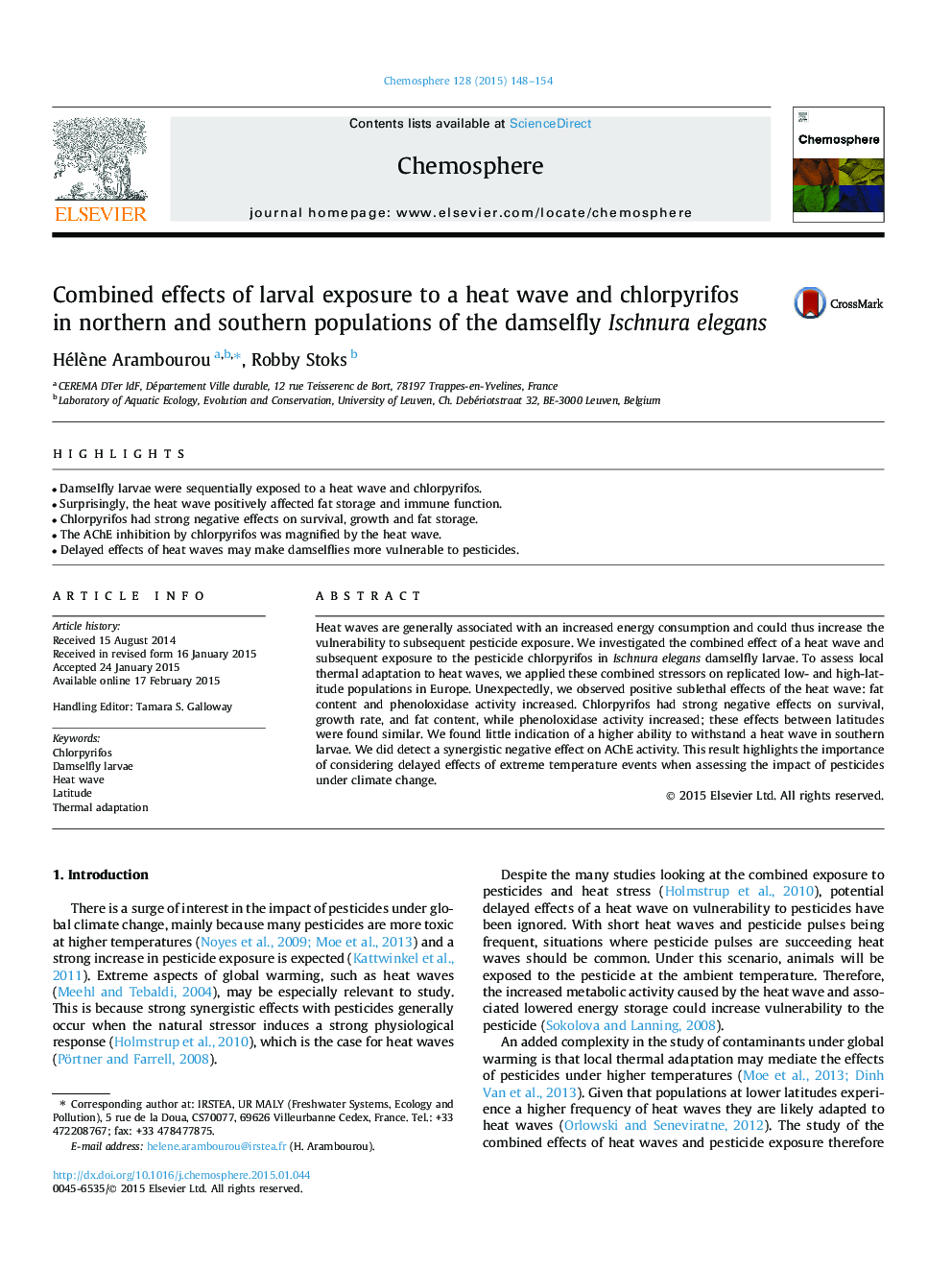| Article ID | Journal | Published Year | Pages | File Type |
|---|---|---|---|---|
| 4408483 | Chemosphere | 2015 | 7 Pages |
•Damselfly larvae were sequentially exposed to a heat wave and chlorpyrifos.•Surprisingly, the heat wave positively affected fat storage and immune function.•Chlorpyrifos had strong negative effects on survival, growth and fat storage.•The AChE inhibition by chlorpyrifos was magnified by the heat wave.•Delayed effects of heat waves may make damselflies more vulnerable to pesticides.
Heat waves are generally associated with an increased energy consumption and could thus increase the vulnerability to subsequent pesticide exposure. We investigated the combined effect of a heat wave and subsequent exposure to the pesticide chlorpyrifos in Ischnura elegans damselfly larvae. To assess local thermal adaptation to heat waves, we applied these combined stressors on replicated low- and high-latitude populations in Europe. Unexpectedly, we observed positive sublethal effects of the heat wave: fat content and phenoloxidase activity increased. Chlorpyrifos had strong negative effects on survival, growth rate, and fat content, while phenoloxidase activity increased; these effects between latitudes were found similar. We found little indication of a higher ability to withstand a heat wave in southern larvae. We did detect a synergistic negative effect on AChE activity. This result highlights the importance of considering delayed effects of extreme temperature events when assessing the impact of pesticides under climate change.
